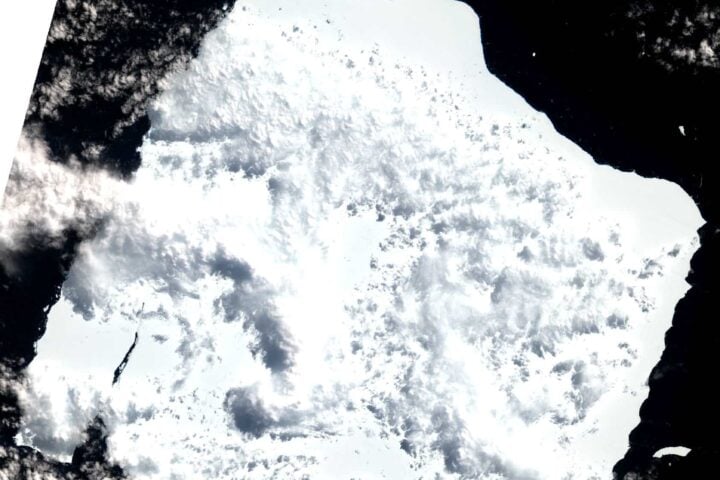Today, when the heartbeat of our oceans is intertwined with the pulse of our climate, scientists have pinpointed ocean currents, melting ice, burgeoning tourism, and insufficient waste management as culprits behind the escalating microplastic levels in the Arctic. The Barents Sea, a nexus of marine life and one of Earth’s most vibrant oceanic zones, stands at the forefront of this challenge. This marine treasure, vital for the flow of Atlantic water into the Arctic Ocean, is now emerging as a potential epicenter for microplastic accumulation.

Dedicated researchers from Plymouth Marine Laboratory and the University of Exeter embarked on a journey into the depths of the Barents Sea, seeking insights into the spread and nature of these microplastics. Alarmingly, the dimensions of these microplastics mirror the ideal prey size for zooplankton, opening the door to inadvertent consumption. This ingestion of microplastics by zooplankton can seed these particles into polar food webs, casting ripples across the broader ecosystem. Past studies have waved red flags, suggesting that consuming microplastics can stifle zooplankton fertility and growth. Moreover, it can tweak the descent rate of zooplankton waste, a vital mechanism for shuttling carbon and nutrients to the abyss.
“It is apparent that microplastic data from the Arctic is limited and this study will act as a reference point for further research. Additionally, sampling methods between studies of microplastics within the Arctic vary and the differing units of measurement used in previous research make it difficult to draw comparisons. We recommend that future studies should strive for a standardised sampling protocol to allow for direct comparisons and more robust conclusions on the ecological and toxicological effects on the Arctic’s marine biology.”
Heather Emberson-Marl, Lead Author On The Paper And Msc Student With The University Of Exeter And Plymouth Marine Laboratory

Data reveals that the eastern Barents Sea holds an average of 0.011 microplastics per cubic meter. These concentrations spike nearer to landforms and the fringes of ice. Delving into the composition, a staggering 92.1% of these microplastics are fibrous, with a color palette dominated by blue (79%) and red (17%). The polymers identified range from polyester to anthropogenically tweaked cellulose like rayon. While pinpointing the exact origins of these plastics remains a challenge, high densities were detected around zones notorious for human-induced pollution and melting ice.
Similar Posts
With the rise of tourism in Svalbard, the lack of robust waste systems could amplify the influx of microplastics into neighboring waters. Other proximate sources, encompassing wastewater, maritime transport, and fisheries, might also amplify the microplastic concentrations along the shores. Heather Emberson-Marl, the study’s lead voice, accentuates the scarcity of microplastic data from the Arctic and envisions this research as a cornerstone for subsequent inquiries. She also champions the adoption of uniform sampling methods to foster more precise analyses and inferences.

Dr. Rachel Coppock sheds light on the deceptive purity of the Arctic. Despite its untouched facade, microplastics can journey vast expanses on ocean currents, potentially ensnaring themselves in sea ice, only to be liberated during the thaw of spring. The UK’s Natural Environment Research Council extended its support to this pivotal study.
The omnipresence of microplastics in our oceans, even in secluded polar zones, is escalating. The Barents Sea’s strategic location, molded by regional currents, could render it a significant magnet for plastic debris. The study reveals that semi-synthetic polymers reign supreme in the microplastic mix, making up 74.4% of particles. The northern stretches of the Barents Sea might witness a surge in microplastic levels due to the retreat of sea ice, while the southern expanses could see a rise owing to microplastic drift from European currents.

The global microplastic boom is a byproduct of their adaptability across industries and the mishandling of plastic refuse. Once these microplastics breach marine boundaries, they become playthings for elements like wind, tidal forces, currents, and even biological dynamics. Polar realms, despite their isolation, are delicate habitats increasingly under siege from pollutants like microplastics. Fresh research suggests that the eastern Barents Sea could evolve into a major microplastic convergence zone, steered by merging currents.
“The Arctic region is remote and most of us might imagine that it is a pristine natural wonder. But once microplastics enter the marine environment they are transported on currents, often from populated areas many thousands of miles away, ending up far from the source and in the case of the high Arctic, may become trapped in sea ice and released during the spring melt. Warming seas are causing greater sea ice melt, potentially releasing further microplastics and adding another layer of complexity to marine life adapting to a changing world.”
Dr Rachel Coppock, Marine Ecologist At Plymouth Marine Laboratory And Co-Author On The Study.

Microplastics pose a looming threat to marine entities throughout the food chain, with zooplankton standing on the frontline. These tiny organisms are the lifeblood of aquatic ecosystems, nourishing a plethora of marine beings. The Barents Sea, nestled close to the Svalbard Archipelago, is a significant microplastic contributor to the Siberian Arctic. This exploration was focused on the western expanses of the Barents Sea, a territory previously shrouded in mystery. Seawater specimens for this endeavor were gathered in July 2018 during the Changing Arctic Ocean Sediments expedition. These samples were meticulously processed at the state-of-the-art Microplastic Research Facility at Plymouth Marine Laboratory, UK. Advanced techniques like Fourier Transform Infrared Spectroscopy were harnessed to decode the microplastic’s polymeric makeup.
The narrative is clear: our oceans are crying out for global intervention to confront the microplastic menace and shield our invaluable marine habitats. The call to action is now.















